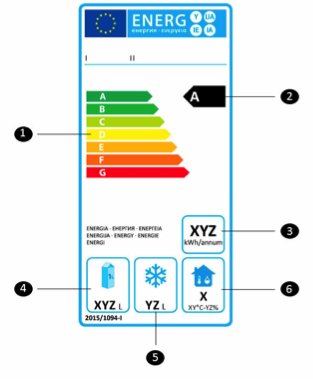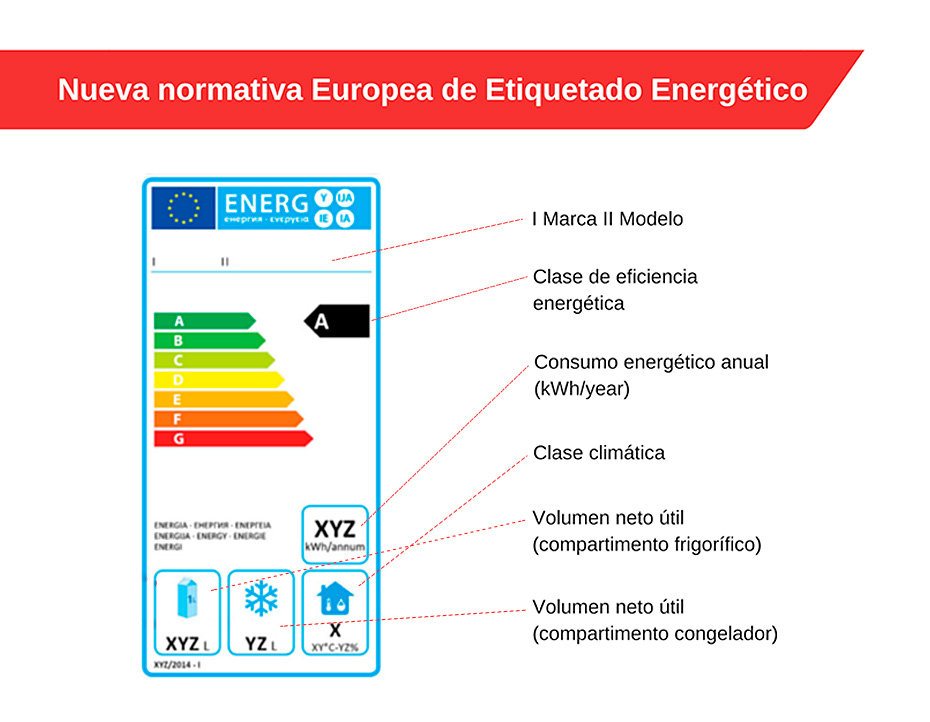As of 1st July, the regulation EU 2015/1094 of the commission that regulates the energy labelling of commercial refrigeration appliances, has come into effect. In practice this means that appliances with an energy classification higher than G will not be able to be sold in Spain.
Here we explain how this new regulation works and the advantages that it brings to professionals of the hotel and restaurant trade.
What is the aim of the regulation?
The energy consumed by professional refrigeration appliances represents a sizeable proportion of the total electricity demand of the European Union. The aim of standardising the energy efficiency classification and labelling is to provide hotel and restaurant owners with the necessary information to make informed decisions when acquiring products with a lower consumption. At the same time, the regulation seeks to incentivise manufacturers to improve the energy efficiency of their products. It is hoped that the introduction of this regulation will translate into significant energy savings and reductions in CO2 emissions.
What information is to appear on the labels?
Energy efficiency labelling for professional refrigeration equipment has a similar format to the labels used to show the consumption of domestic appliances. The label must display the energy classification of the appliance, its standardised annual energy consumption in kWh per year, the total net volume in litres of the refrigeration and freezer compartments and the climate class.
How to understand the information on the energy efficiency labels
 1.- Energy efficiency classification scale. Class A denotes an energy efficiency index (EEI) of between 15 and 25 (maximum energy efficiency), and class G denotes an index of between 95 and 115 (lower energy efficiency).
1.- Energy efficiency classification scale. Class A denotes an energy efficiency index (EEI) of between 15 and 25 (maximum energy efficiency), and class G denotes an index of between 95 and 115 (lower energy efficiency).
The regulation will be in continual development and foresees the gradually elimination of equipment with higher indexes (2016-2019). New energy efficiency ratings are also expected to be introduced as of 2019 (A+, A++, A+++).
2. The energy classification of the appliance. An A classification denotes the highest efficiency, and a G classification, the lowest.
3.- Annual energy consumption in kWh/year
4.- Total net volume of refrigeration compartments.
5.- Total net volume of freezer compartments.
6.- Climate class of the appliance: The climate class represents the conditions in which the measurement has been taken. In the case of professional refrigeration equipment, the rule establishes climate class 4. (Climate class 4: Ambient temperatures from +10°C to +30° C).
Advantages of the new labelling system
This type of labelling, which was already in obligatory use to provide energy efficiency information on non-industrial electrical appliances, allows consumers to make informed decisions before acquiring their commercial refrigeration products.
For professionals of the hotel and restaurant trades, the purchasing of commercial refrigeration appliances with a higher energy efficiency can mean a significant saving in the electricity costs of their business at the end of the year.
Fagor Professional stands for energy efficiency
At Fagor Professional, we are always seeking to provide our customers with solutions that help them to develop their businesses more efficiently. We will shortly invite you to discover our new commercial refrigeration generation, with hydrocarbon gases, which has allowed us to develop a new catalogue of products which promote responsible and efficient consumption, with energy consumptions up to 70% lower.



Follow us